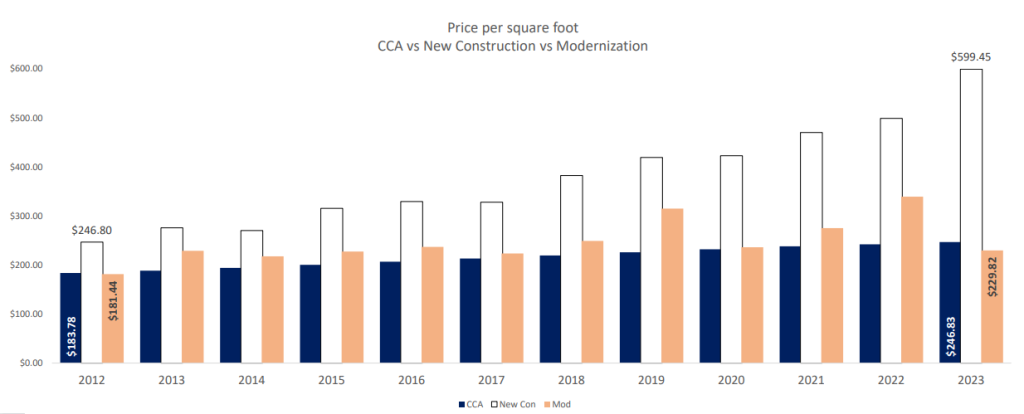2:31 pm
December 5, 2023
The 2024 supplemental capital budget request from the Office of the Superintendent of Public Instruction (OSPI) would increase capital appropriations for the agency by $202.2 million for 2023–25, and estimated appropriations through 2031–33 would increase by a total of $5.858 billion. The 2023–25 amount is 10.8% of total capital budget requests statewide and the ten-year total is 63.1% of total capital requests. (OSPI additionally requested $349.7 million in the 2024 supplemental operating budget.)
OSPI’s capital request includes $5.8 million in 2023–25 ($5.662 billion over ten years) to increase the school construction assistance program funding formula and $173.9 million in 2023–25 for small district modernization grants.
The school construction assistance program (SCAP) is one of the main ways the state helps districts fund school construction. When districts have local funds (e.g., an approved bond) for a project, SCAP provides matching funds. The amount provided by the state depends on enrollment, a student space allocation, a construction cost allocation, and the state funding assistance percentage (which is higher for districts with lower assessed property values).
OSPI’s request would increase student space allocations (which vary by grade) beginning in FY 2025; the new allocations would be fully phased in in FY 2029. OSPI’s request would also increase the construction cost allocation from $258.92 to $928.39; the increase would be phased in from FY 2025 to FY 2033. According to the request, “Enhancement of the state share of SCAP helps school districts lower their contribution while constructing or renovating a school.”
On Friday, the Senate Ways & Means Committee had a work session that included a presentation on K-12 construction finance. The presentation includes the following chart showing the difference between the construction cost allocation and actual prices per square foot.

The next charts show state appropriations for SCAP over time. In recent years, most of the funding for the program has come from the state building construction account (state bonds). OSPI’s proposal would rely more on the common school construction account (CSCA) until 2031–33 (at which point bonds would again account for more of the funding). For SCAP, the enacted 2023–25 budget appropriated $176 million from the CSCA and $412 million from state bonds. Under the enacted budgets, estimated spending on the program over the next four biennia is $5.137 billion from state bonds. OSPI’s request would increase 2023–25 appropriations by $6 million from CSCA. Estimated spending on the program over the next four biennia would increase by $3.633 billion from the CSCA and by $2.023 billion from state bonds.


The second major project requested by OSPI is for small district modernization grants. This program is for districts with fewer than 1,000 students, and no local match is required. The Legislature appropriated $42.1 million in 2021–23 and $100.0 million in 2023–25 for the program. The 2024 supplemental request would add another $173.9 million from the CSCA for 2023–25. According to the request, this would fund six construction grants and 27 planning grants. (The specific school districts that would receive grants are listed on pages 15 and 16 of the request.)
Over the ten-year period of OSPI’s request, 65.5% of the total appropriations would be funded from the CSCA. By contrast, for each biennium going back to at least 2011–13, state bonds had made up at least 60% of capital funding for K–12. This shift is enabled by capital gains tax revenues. By statute, any capital gains tax revenues over $500 million in a year (adjusted for inflation) go to the CSCA.
Actual capital gains revenues to the CSCA for 2021–23 totaled $347.5 million. The November revenue forecast estimates that capital gains revenues to the CSCA will be $668.9 million in 2023–25, $826.1 million in 2025–27, and $980.9 million in 2027–29. As Ways & Means staff pointed out at the work session, state trust land revenues had previously been the major source of funds for the CSCA, and they typically totaled just $130 million a biennium.
(Previous posts on agency 2024 supplemental budget requests are here.)
Categories: Budget , Education.Tags: 2023-25 , 2024 agency requests
